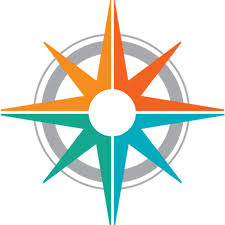The Future is Here
Collaborating with other organizations can inspire real creativity in our approach to helping our clients, which in turn can result in new examples and models that affect the entire community of organizations that serve the needs of individuals challenged by complex disabilities.
It has now been nine months since the good folks from Jason Learning and from Urban Tech visited Grafton at the Ruth Birch Center. It was clear, even from our first visit, that the three organizations shared a passion for teaching and learning.
I was among several who waited in the auditorium after the presentations to chat with our guests. It was at the end of the day, and folks had significant distances to travel, yet there we were, chatting with one another about the exciting ideas that had just been shared.
Given the collegial tone at the end of that day, I was certainly not surprised when follow-up calls occurred, and the three companies sought to collaborate on a project.
True to Scott Zeiter’s blog on January 28th, we were now exploring an exciting future with these two organizations. We discussed a collective mission of producing an online socio-emotional curriculum that met the needs of our students while also actively engaging them in the process.
We held numerous meetings to discuss existing products, including those that Jason Learning and Urban Tech had already produced. Both companies had robust sites online and existing student users, so they brought a wealth of experience to the team.
What we intended to target, however, was a new population of students—students whom I had been working with for over 14 years in educational settings outside the traditional model who were struggling to make positive behavioral choices. The team discussed how this curriculum could provide the opportunity for theirsuccess.We were excited about what we had brainstormed and knew we needed to take a meaningful step forward.
Then we turned to gather the most critical feedback, which would come from our students.
Tyler Donahoe, our high school history teacher in Berryville, assisted in gathering honest student reports concerning the materials—and at no point did they refrain from sharing what they felt. They reported when the materials were interesting as well as when they weren’t.Mr. Donahoe himself offered detailed suggestions concerning the presentation of the content. After all, as he had used it for instruction and he could identify what felt comfortable and what he saw as limitations.
We then met with the team and offered this feedback. It was amazing to see how participants took such care to listen and reflect. The atmosphere was identical to that which I had experienced nine months before. Folks were excitedly sharing how to implement intended changes. We were brainstorming how to reach the students with what was already working in the content, but it was also clear that we really wanted to achieve even more. Next steps were determined, and I was excited that one included student participation. In the feedback, our students said that they could more easily relate to “real people” (the materials presented had included cartoon vignettes).
Our planning discussions quickly zeroed in on an incredibly powerful concept: what if we could include existing students in the presentation of the content? The first two modules, Bullying Prevention and Conflict Resolution were natural conduits for student testimony. With this opportunity, we could ask students who had already made significant progress in their own treatment and education to serve as positive peer models. In one fell swoop, we could join them in celebrating their success, while also offering their peers the chance to hear the voice of experience.
And going forward, we hope to share this model with our own peers in the larger caregiving community. It is a vision for the future, and the future is now.
